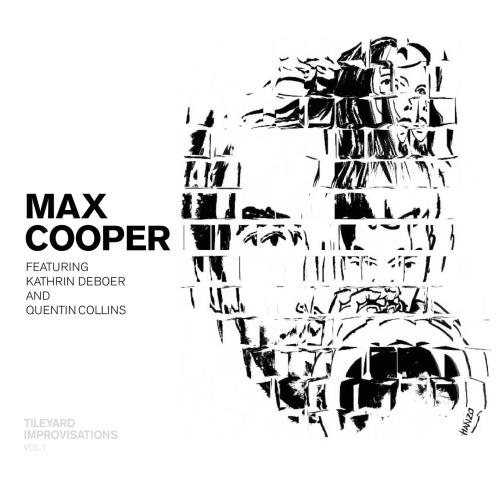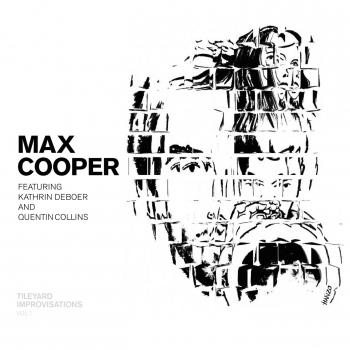
Tileyard Improvisations EP Max Cooper
Album info
Album-Release:
2014
HRA-Release:
27.03.2020
Album including Album cover
- 1 Chronology 06:55
- 2 Dusk Mass 06:41
- 3 Theatre of the Absurd 04:30
- 4 Animate Expanse 04:12
Info for Tileyard Improvisations EP
A collaboration fusing electronic dance and hard bop jazz between techno producer Max Cooper, former Bonobo singer Kathrin deBoer and jazz trumpet star Quentin Collins.The Tileyard Studio complex in King's Cross is home to Gearbox Records and Mark Ronson's Zelig Studios, where the Tileyard Improvisations was spontaneously performed and recorded live.The tracks highlight the extraordinary interplay between Kathrin deBoer's sensational improvised vocal performance and the laser-sharp Lee Morgan/Freddie Hubbard inspired hard bop trumpet of Quentin Collins, both perfectly set in the grooves and textures of Max Cooper's remarkable mixes and soundscapes.
"On paper this shouldn’t work. The disciplines of jazz and techno aren’t that similar. One is about space and texture and the other about dense sounds and rigid structure, but Max Cooper’s Tileyard Improvisations: Volume 1 is a flawless piece of work. It excels where so many others have failed. While it doesn’t sound like it at first, this is contemporary hard bop at its best. Special credit should be given to deBoer that she even managed to fit her unique vocal phrasings into the tracks, instead of just standing back and listening to the fantastic interplay going on around her. Extra special mention should be given to Gearbox Records for putting this out in the first place. Another solid release from London’s premier jazz label. As the title alludes this is Tileyard Improvisations: Volume 1, if this is anything to go by I can’t wait to hear Volume 2!" (The Ran$om Note)
Max Cooper, beats
Kathrin deBoer, vocals
Quentin Collins, trumpet, flugelhorn
Darrel Sheinman, drums, percussion
Jack Stevens, bass
Max Cooper
Strip away the awe-inspiring AV spectacles, the peak-time DJ voyages in front of huge crowds the world over, the lofty certifications bestowed upon him by platforms of both academia and electronica – at the core, Max Cooper’s mission as a musician, a DJ and an interdisciplinary artist is all about provoking a greater understanding. So why is the man himself a touch misunderstood?
For once, this is a case of scaling down, rather than up. There is no need to over-play the hand; Max Cooper has been a prominent culture figure of the 2010s. Few have been so successful in interrogating and furthering the intersection between electronic music, visual art, technology and science in the past ten years. As a DJ and live performer, he has featured at nearly every major festival and club that one could list. An instalment in the BBC Essential Mix series; a Cercle livestream inside the Musee Bourdelle that reached hundreds of thousands of fans; ‘Glassforms’, a reinterpretation of Philip Glass’ work; and even a collaboration with Zaha Hadid Architects, mapping projections onto an 18th century castle, variously speak to his thrum of high-profile activity in recent years. Cooper has an arms-length wingspan of achievement. Yet the grand question that keeps his mind ticking as the 2020s begin is, in his own words, “a question of communication.”
Cooper wants to present a diverse palette of experiences without diminishing them – to show you his world on multiple levels, without it ever appearing daunting. And it shouldn’t be daunting: Cooper’s music is lush, emotive and grand, and the way he brings this to life, using everything from binaural sound positioning to 360˚ visual panelling, is meticulous, technical and often powerful to behold. But all the elements are highly accessible. You could, after all, walk through the Aether installation Cooper worked on with Architecture Social Club, or feel the ripples on your fingers when 4DSOUND speakers pushed swells of bass and soaring arpeggios outward from his equipment and into the physical space.
All this adds up to a classic case of electronic exploration that makes use of available technology while referencing that which came before it, and does so in a human way. Cooper points to the groundbreaking artistry of Chris Cunningham’s music videos, and the marriage of score and cinematography in the motion picture Koyaanisqatsi, as blueprints for what he sets out to achieve. “There are often no characters and no speaking, it’s just really impactful storytelling through the medium of abstract visuals and audio,” he says. “That is what I fundamentally aim for. I want to communicate something strong. I want to make an impact on people. And if something is fruitful, I am keen to learn. It’s all a matter of trying as much as possible.”
Yearning for the Infinite, his fourth studio album, is another rich attempt to throw a cast net over this innate curiosity. The project arose through an invitation from The Barbican, asking Cooper to respond to their 2019 theme of “Life Rewired.” On the resultant LP, he continues to till the fertile land of “big chord progressions and micro-glitch detailing” that captivated listeners across previous albums Human, Emergence and One Hundred Billion Sparks. On Yearning, Cooper places more trust in intuition and improvisation than before. Musical parameters are set but non-repeating loops, melodic squiggles and ultra-dense layering of channel help him colour outside the pre-defined lines. One song is a rocket of ecstatic release, the next as still and disquieting as a will-o’-the-wisp. The variation ensures the 50th listen is as rewarding as the 1st.
Ideated and developed in individual chapters, Cooper’s preferred method, and with a number of longstanding collaborators such as film-maker Nick Cobby and mathematician Andy Lomas continuing to work alongside him, the project extends his overarching goal to reach for the sublime and help his audience get there too. Where previous full-length have explored the birth of the universe, the formation of natural law and the inner workings of the mind, Yearning for the Infinite once again deals with immense topics. Placed together, the audio, filmic and concomitant web media speak of parallax, Penrose tiling and the folly of perpetual growth. There is a red line in Cooper-world over hammering the phrase ‘immersive’, but this does the job rather well. As much as Cooper’s shows are an immersion of sound and vision, his projects are an overall immersion of concept. He wants to reach for the sublime, and, critically, help you get there.
This chameleonic quality in his output lends him to varying situations: a viable headliner for both The Barbican and Bangface in the same calendar year, as Cooper wryly points out. A sharp set of hands on the turntables from younger years in Belfast and Nottingham, he still remains as excited about the possibilities of applying himself to warehouse technos circa 7am as high-minded art expos at 7pm. “Both are valid,” and he gives short shrift to those who play gatekeeper at the invisible walls between them. The mutual power, he says, “comes in the fact that both can totally remove you from your normal experience of reality and put you somewhere new. That can be an intense sort of artistic experience.” And this gets to the root of Cooper’s approach.
You don’t need a PhD or an encyclopaedic knowledge of the works of Philip Glass to invest in Max Cooper – that is the opposite of his intention. What drives Cooper forward in a state of “Perpetual Motion” is making these great intangibles tangible: to plant a kernel of an idea or a feeling in your body, and then develop that in real time through creative storytelling that defies format. He can scrape the cosmos and divine the near future of art and science’s convergence, and he can do it with a dynamic piece of recorded audio or just a few absorbing frames of film.
“If I put something into the world that represents me,” Cooper says, “then it renders my soul in a more solid form for others.” As an accomplished artist, Cooper has reached a point where he can apply his craft to something more timeless: to break off a piece of himself and let it become a piece of his audience, forming a human connection that lingers long after the screens go black and the synths stop humming. For someone who appears outwardly so sorted, a master of his specific domain, Cooper is in a mode of challenging himself anew. The synthesis of interests continues, but the overall questing has taken on an added importance. “People perceive it as a challenge, maybe even a problem,” Cooper smiles. “I think it’s wall to try and knock down though, you know?”
This album contains no booklet.












